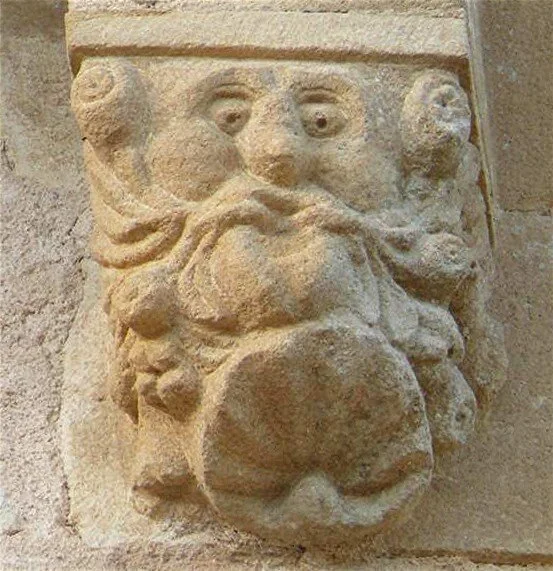The story of a Passion born from Love and Tragedy
&&&
Véronique’s parents decided to go ahead with Alain Cassegrain’s - her father - crazy crazy lifelong dream: to restore an old ruin from the depths of Burgundy. His decision was set on either Anizy or Chandioux, a ruin still very much in the state of old, broken stones today.
Anizy was symbolic. After the tragic loss of his only son in a car accident, it was Alain Cassegrain’s way of turning his grief into something meaningful. In Jan 1977, on a dark Saturday afternoon, he took mum to visit his dream home. In her words: “i stared around, knee deep in mud, freezing and struggling to visualise what Dad saw - but excited. It required extraordinary vision and determination to be able to achieve what he did over the next decades”.
At the time, France had a system allowing tax payers to redirect their taxes to the restoration of Monuments. And so he acquired ruined, muddy Anizy a few months later in July 1977, using everything he had.



Immerse yourself in the fabulous past of Burgundy, and the history of the Château
Vth century AD
Anizy’s historical importance, from the first centuries, is confirmed by the excavations which have uncovered the structures of a Roman villa and the 0.50m high base of a Paleo-Christian church.
Middle Ages
Anizy was the seat of a parish of 60 fire heaths, thus housing an estimation of around 250 individuals. The first attestations in the archives of the Nièvre district mention “la Parrochia de Anizio” around 1140 AD - and a fief: a barony with a nine-pillar justice of the Moulins-Engilbert lordship. The barony gave its name to a family whose lineage ceased in the middle of the 14th century; then was passed on to the Champdiou family who transmitted it by the alliance to the Frasnay family around 1380 AD. The Frasnays added many improvements, particularly the construction of the towers. as evidenced by the notarial acts of 1571 and 1620. One of the Frasnays had a certain literary glory, he called himself, "the New Theophile".
Anizy and the Enlightenment
On April 12, 1673 the land of Anizy was acquired by decree at the bailiwick of Saint-Pierre-le Moutier by the "powerful Lord Lord Louis of the Bois de Fiennes, Marquis of Vandenesse, General Lieutenant in the King's armies". The parish of Saint-Martin d'Anizy was abolished in 1793 following the Revolution, and attached to the town of Limanton; it still had 244 inhabitants.
Anizy in XXth Century
Anizy was sold as a national property, bought by the manager of the Bois de Fiennes in the name of the former owners, who re-took possession of it. It was transformed into farm buildings and completely denatured: the castle became a farmer's residence, and the church transformed into stables and barns. She remained in this family until 1977 and was acquired on that date by Mr. and Mrs. Alain Cassegrain. It was their daughter Véronique who took over the property in 2003. Anizy was listed as a Historical Monument in 1980. Veronique and her family have since then been continuously renovating, protecting, and maintaining this special piece of historical heritage.
Saint-Martin’s Chapel
The Saint-Martin’s Church in Anizy had been transformed into a stable in 1793 after its sale as a national good. The restoration was undertaken in 1988 and was completed in 1995.
The vault of the choir was completely redone, in the same fashion as the left wall on the castle side. Some frescoes remain which are to be restored.
The portal was able to be re-assembled thanks to the stones found during the demolition of the stable walls. The right marquee was found at the top of the main gable like the cross, which is located at the top of the gable. The ceiling of the nave is in chestnut, in accordance with the remains found on the beams. The floor and lighting have been completely redone.



The Moat & Drawbridge
Thanks to a 17th-century plan, all the foundations of the surrounding walls have been searched for and discovered; the plans also made it possible to restore the moats and the bridge. The courtyard was raised about 1.50m during the Renaissance when the towers were built; it has hardly changed since that time. The bridge as it is today used to be a drawbridge
The Stair Tower & the Framework
The staircase tower serving the first floor and the attic was built during the Renaissance in 1571, together with the round tower on the left. It was during this time that the large city walls were torn down. The oak staircase is classified with the tower. The frame is of the "maritime" type, well known in this region. Carpenters out of work in the shipyards came to make oak frames like the hulls of a ship, which explains the impression of an overturned boat.


![533_001[1]_DxO.jpg](https://images.squarespace-cdn.com/content/v1/5ecc2e1fc6fa01358cf82142/1590655025305-C93MI8SX2LRT7N2XDAPW/533_001%5B1%5D_DxO.jpg)



